Hello all,
Here are the promised pictures of the assembled hull halves and gun deck.
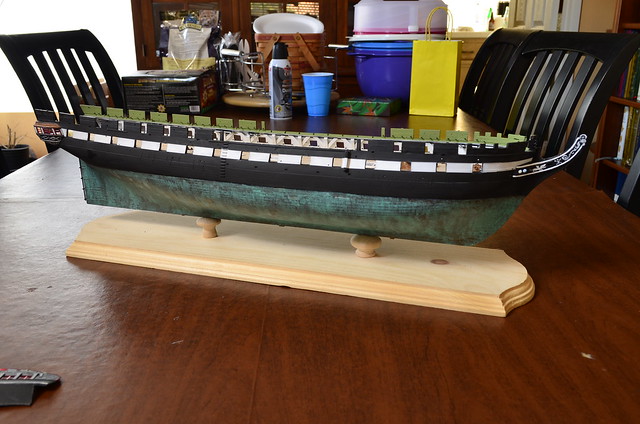 _DSC7838 by Jose Gonzales, on Flickr
_DSC7838 by Jose Gonzales, on Flickr
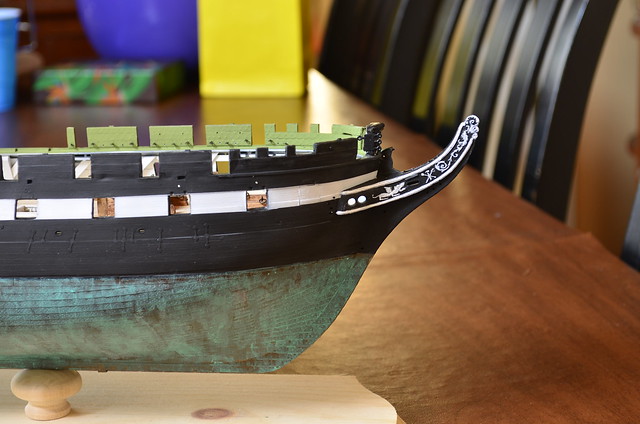 _DSC7839 by Jose Gonzales, on Flickr
_DSC7839 by Jose Gonzales, on Flickr
 _DSC7840 by Jose Gonzales, on Flickr
_DSC7840 by Jose Gonzales, on Flickr
 _DSC7841 by Jose Gonzales, on Flickr
_DSC7841 by Jose Gonzales, on Flickr
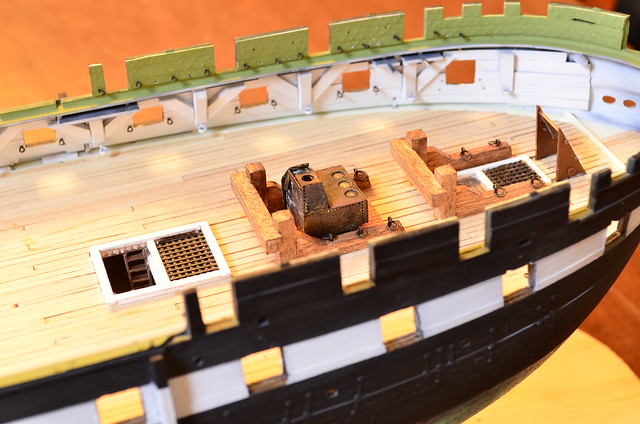 _DSC7842 by Jose Gonzales, on Flickr
_DSC7842 by Jose Gonzales, on Flickr
I was encouraged by the success of the suspended berth deck below, and was considering building up the spar deck from the wood dowels and deck plank sheets, but when I lined up the Revell plastic spar deck pieces on the deck plan sheet from the BlueJacket kit, I found some discrepancies.
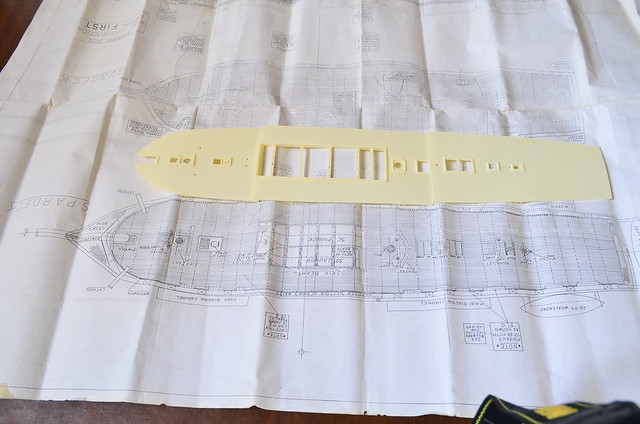 _DSC7844 by Jose Gonzales, on Flickr
_DSC7844 by Jose Gonzales, on Flickr
First, note that the main hatch on the Bluejacket plans is smaller than the Revell deck's hatch. The deck beam locations seem to line up fairly well. But the biggest discrepancy is the locations of the fore and main masts. The foremast on the Bluejacket plans is stepped farther back, and the mainmast is farther forward
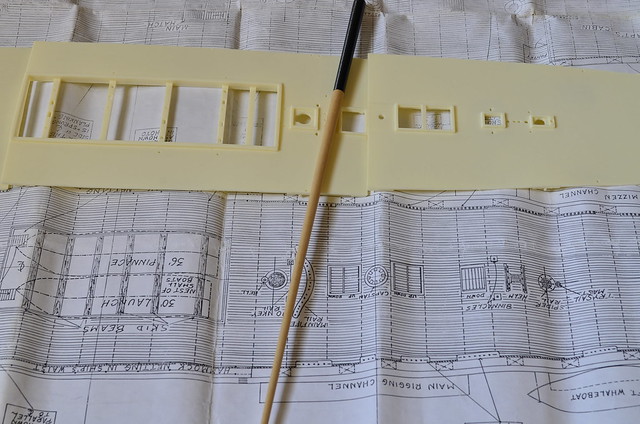 _DSC7846 by Jose Gonzales, on Flickr
_DSC7846 by Jose Gonzales, on Flickr
 _DSC7845 by Jose Gonzales, on Flickr
_DSC7845 by Jose Gonzales, on Flickr
The mizzen mast lines up fairly closely. Since I had already mounted the wood-planked plastic gun deck, I could not use these plans to generate a wooden spar deck to match the gun deck.
I searched for an explanation for the discrepancy, and found one - in the book "Old Ironsides: The Rise, Decline, and Resurrection of the USS Constitution" by Thomas Gillmer, illustrations by William Gilkerson, 1993, paperback (first printing 1997). On pg 160, Chapter 5 "The Restoration Question", Gillmer describes the changes in the structure of the ship over the last ~200+ years: "One of the most striking diversions from the original design is in the location of the masts. The formast step has been moved aft about 2 feet 4 inches. At the deck it is 3 feet 2 inches farther aft, showing an increased rake aft of more than 2 1/2 degrees; this results in a total aftward change of approximately 5 1/2 feet to the mast's fore top. the mainmast, to the contrary, has been moved forward and closer to the foremast, with the mast-step center moved about 2 feet 3 inches forward on the keelson..." In short, the mizzen mast is relatively unchanged from launch, but the foremast has been moved back, and the main mast has been moved forward since launch. If this is true, the Bluejacket plans represent the ship post mast step movement, while the Revell kit has the masts in their original location. If you have the book, there is also a drawing on pg 156 of the same chapter which overlays a draft of the current lines of the ship on top of an as-built drawing - this drawing alone is worthy of a separate discussion. The question is, when did the mast-step changes take place, before, during, or after the glory years of the War of 1812? Unfortunately, the book does not answer that question.
Jose Gonzales
San Diego, CA